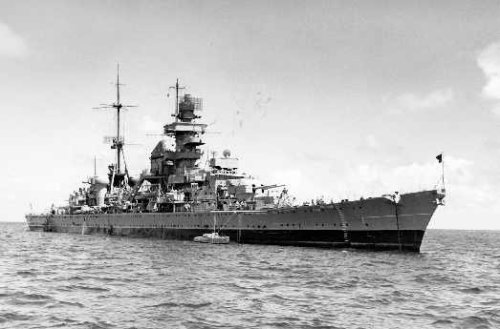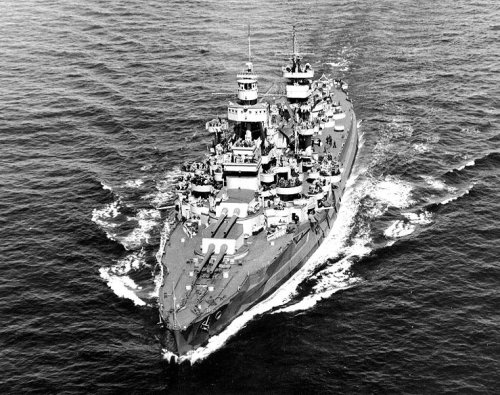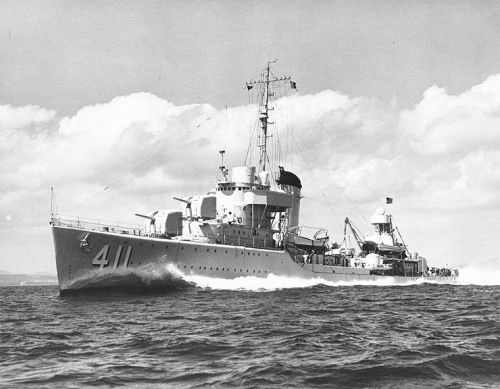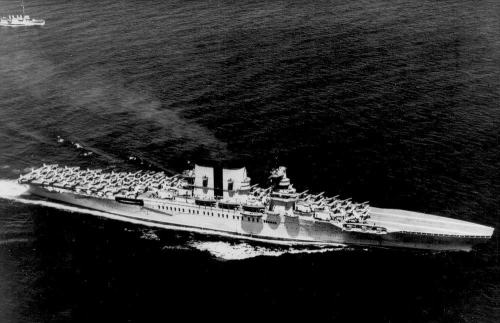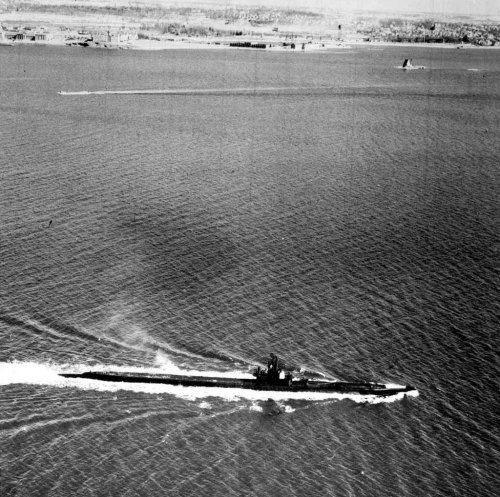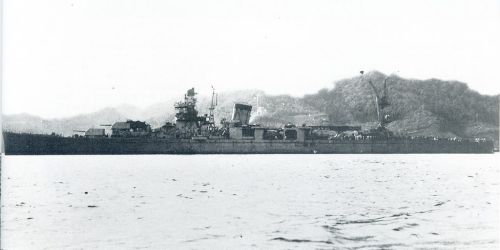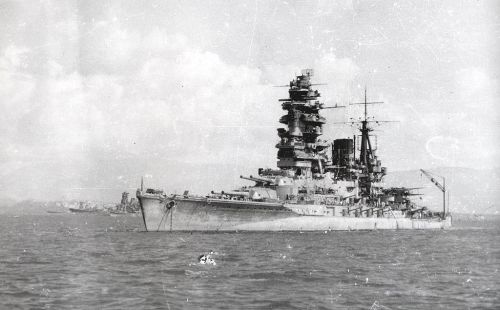“The effects could well be called unprecedented, magnificent, beautiful, stupendous and terrifying. No man-made phenomenon of such tremendous power had ever occurred before.“
– General Thomas Farrell
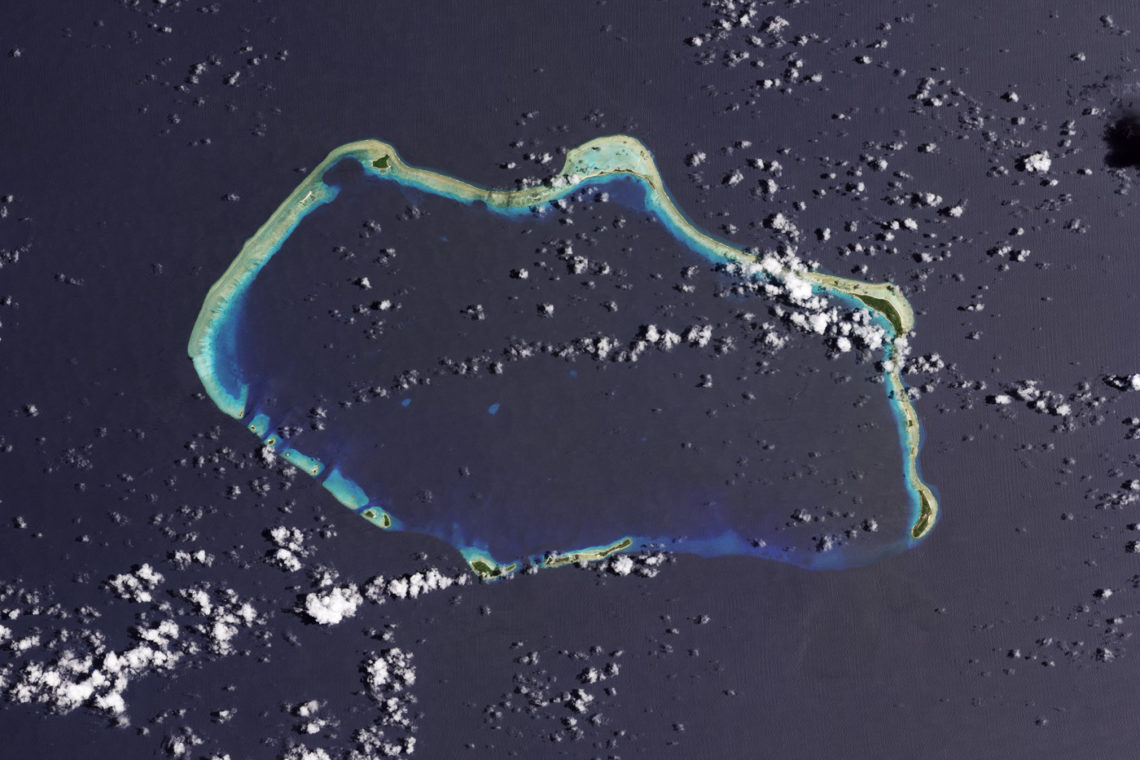
About Bikini Atoll
A collection of 23 islands surrounding a 230-square-mile lagoon, Bikini Atoll is one of 29 atolls in the Marshall Islands and one of the most spectacular dive sites in the world. Though the atoll became famous as a nuclear testing site, today it is known as a UNESCO World Heritage Site and a bucket-list diving destination.
Prior to World War II, Bikini Atoll changed hands between the Spanish, German, and Japanese governments before being claimed by the United States in 1944.
After that point, the American military used Bikini Atoll as a testing site for nuclear weapons over the next decade or so (see video below). Between the sea battles fought in the area and the nuclear testing projects, Bikini Atoll became a “ship graveyard” with battleships, cruisers, and aircraft carriers resting on the seafloor.
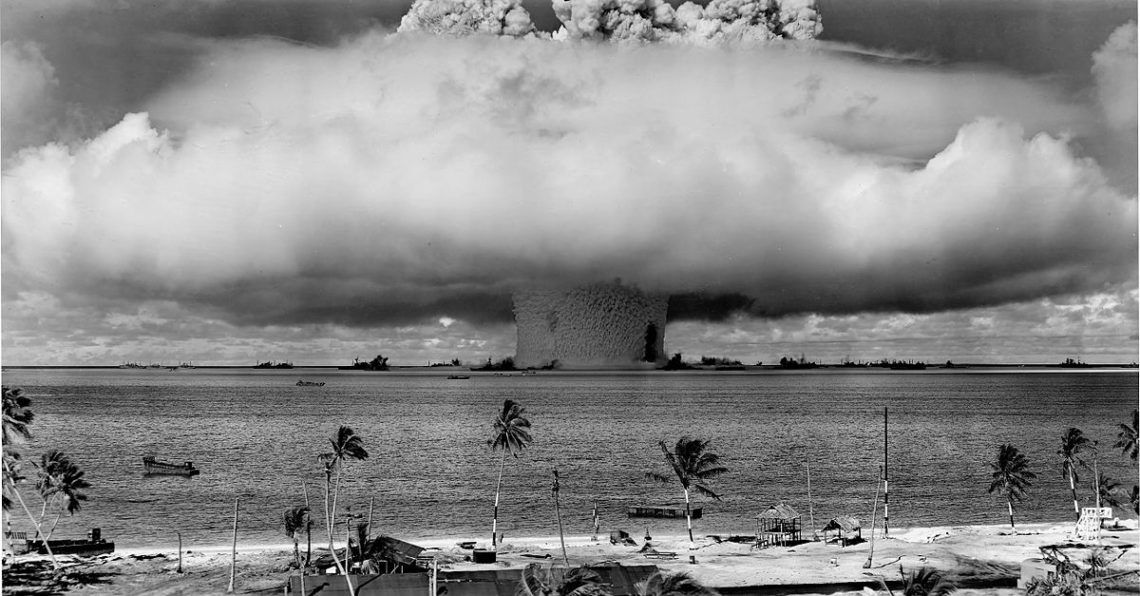
For years after nuclear testing ended, a combination of the dangers of radioactivity, a lack of local services, and the atoll’s remote location kept divers away from this potentially remarkable diving site. Today, however, modern technology and a significantly lessened radiation risk enable expert divers to explore this incredible area.
Unlike anywhere else on earth, experienced divers can get up close and personal with these relatively untouched shipwrecked vessels.
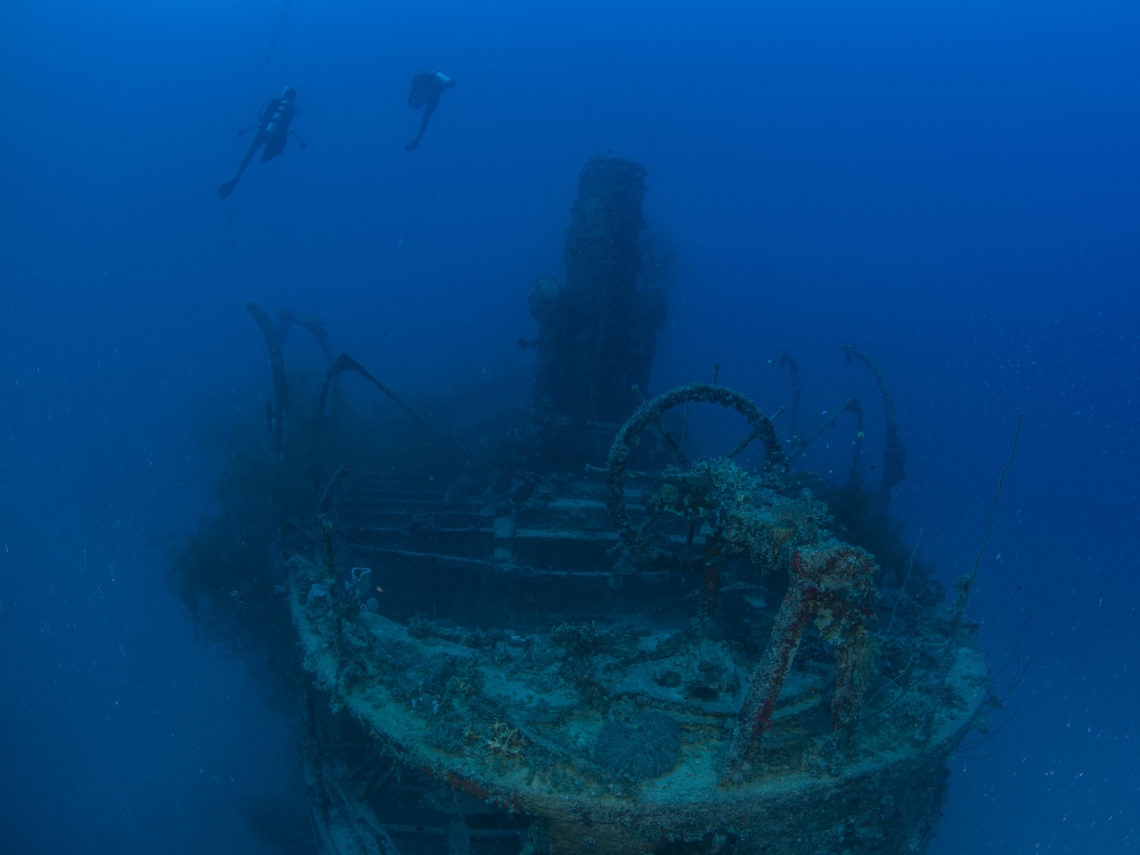
Live-Aboard Dive Trips to Bikini Atoll
With your interest now sufficiently piqued, you may be wondering how to cross the ultimate diving adventure off your bucket list. Indies Trader is the longest running and most technically safe provider of dive tours on the nuclear fleet at Bikini Atoll. Through a concession agreement with the local government of Bikini Atoll, we are offering trips from Kwajalein Atoll to Bikini between May and October.
Safety is always our highest priority, and our top-of-the-line equipment and expert knowledge of the area makes us an extremely safe technical operation. Due to the complexity of the diving sites at Bikini Atoll and the remote location, our trips are designed for highly experienced divers. It’s not suitable for entry-level divers.
Indies Trader’s Bikini dive trips begin in Kwajalein, which means you can fly directly from the United States to Kwajalein on United via Honolulu. In Kwajalein, a member of our staff will be awaiting your arrival and escort you to the Indies Surveyor, our live-aboard vessel.
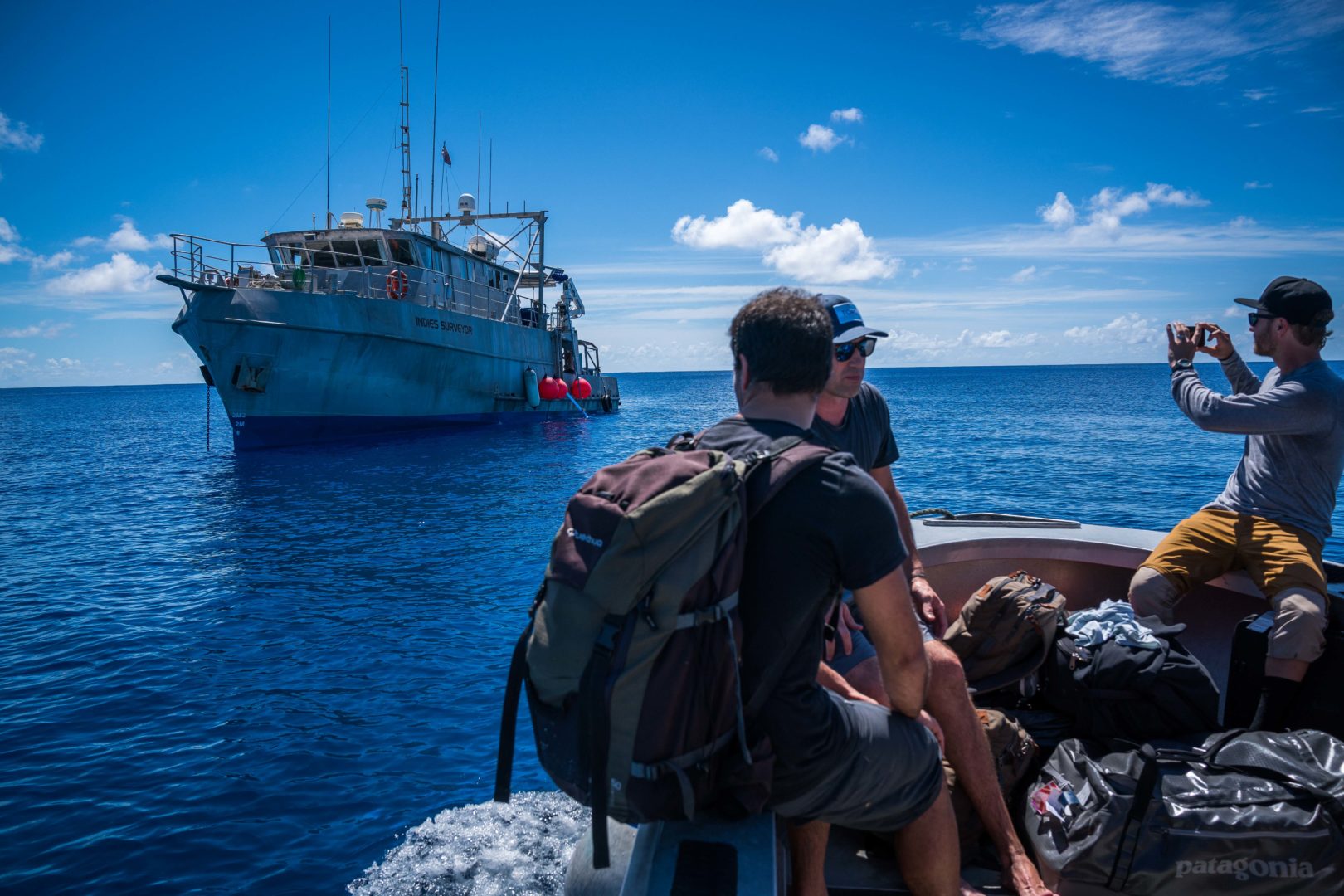
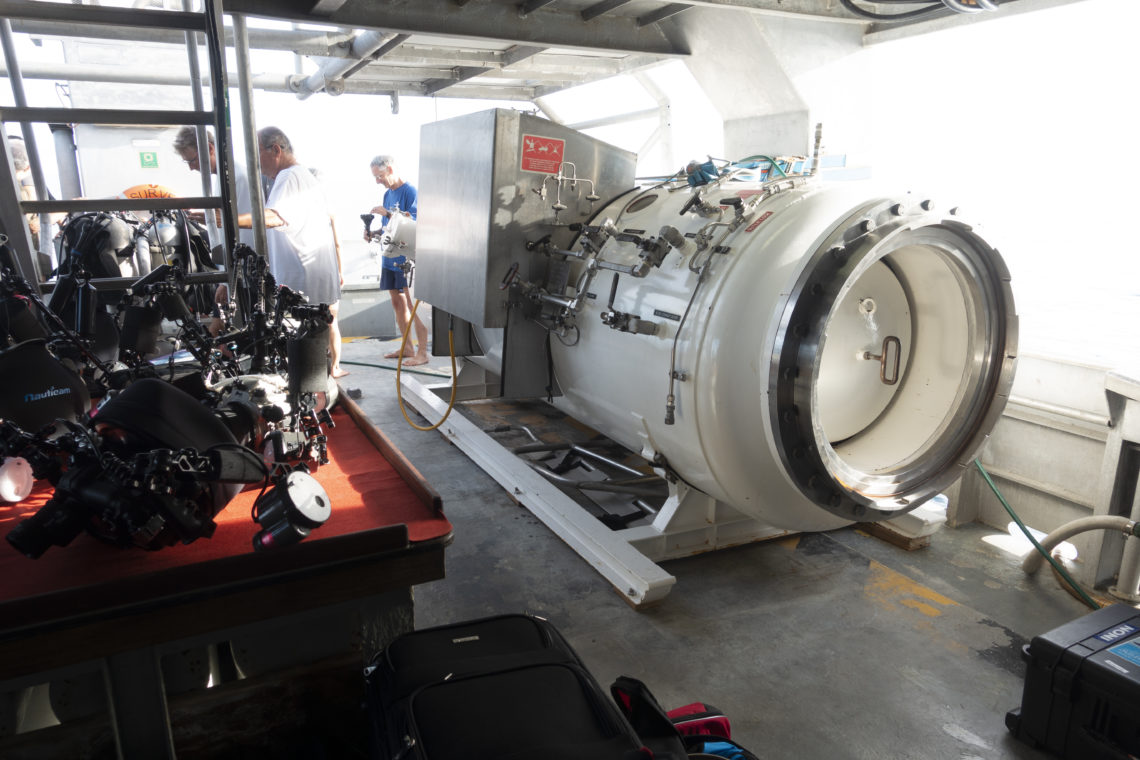
The ships have world-class diving equipment, such as breathing air compressors and a decompression chamber. Combined with the expertise of our captain and crew, you really can’t find a more seasoned diving operation, especially not in this area.
Trips will start with wreck diving in Kwajalein, then head to the wilderness of the atomic atolls of Rongelap and Rongerick. Upon arriving in Bikini, we’ll wreck dive the nuclear fleet and then dive our way back to Kwajalein.
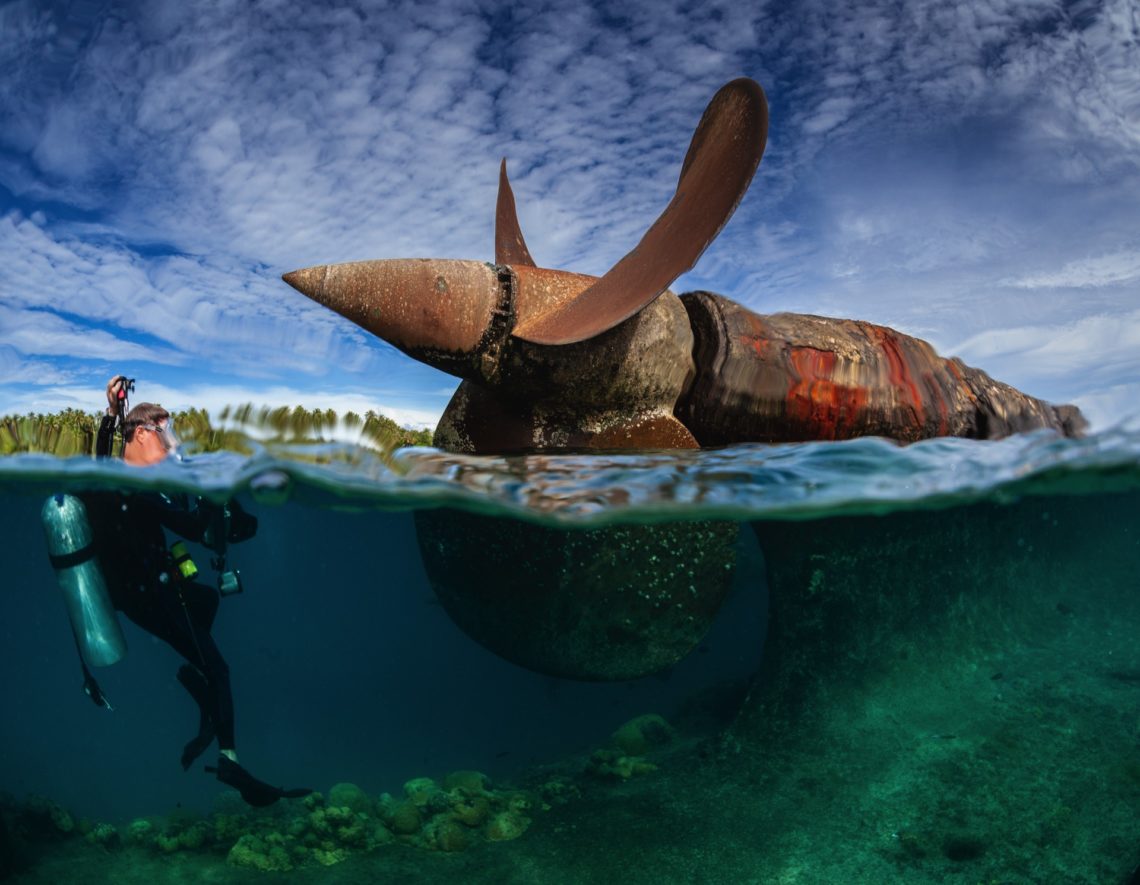
With only 10 divers per trip and only a handful of trips each year, Bikini Atoll is a very exclusive dive site. Fewer than 80 divers per year get the opportunity to participate in a diving expedition to the nuclear fleet at Bikini Atoll. This area is a favorite of many divers who have traveled around the globe, and it’s recommended only for technical divers with previous wreck diving experience.
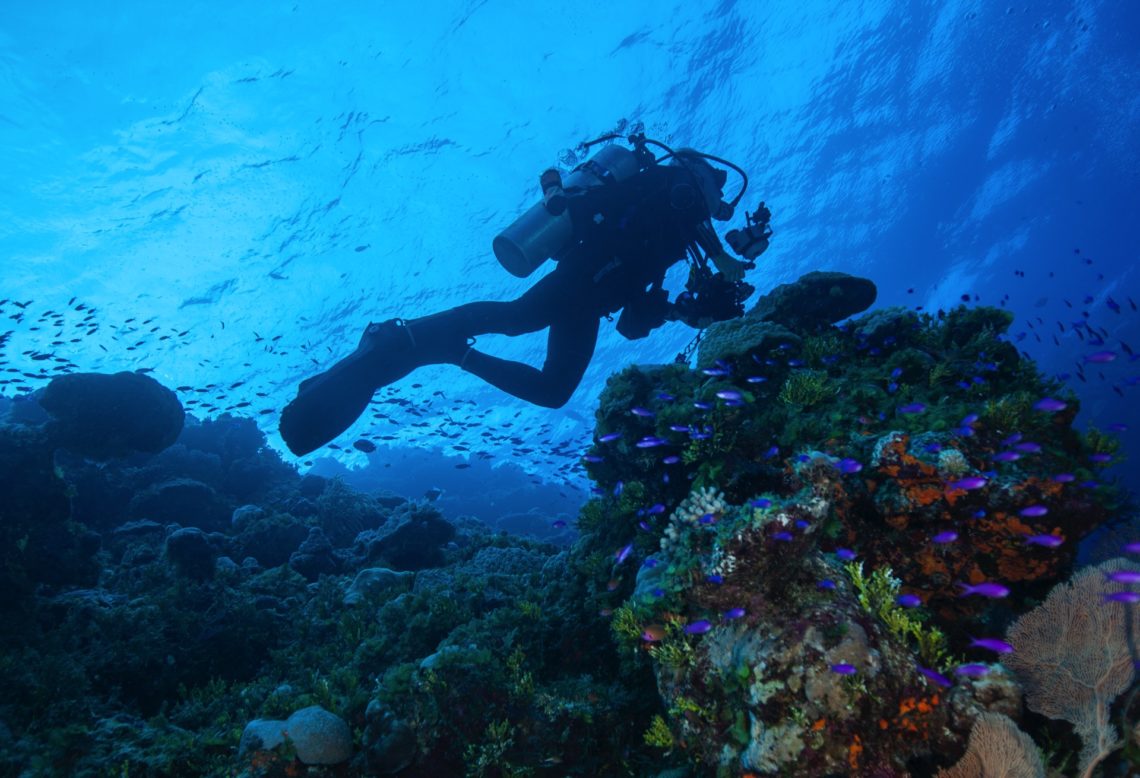
We emphasize the importance of having adequate diving experience not to scare you off, but to reinforce the fact that Bikini Atoll’s isolated location in the middle of the Pacific makes it difficult to obtain emergency medical care. Know your body and your limits, and you will be able to determine if such an expedition is right for you. The Indies Trader team does everything we can to make our trips as safe and healthy as possible, so we appreciate your help in diving responsibly too.
Inquire
Indies Trader also offers whole boat charters for the dive season of May to October. Contact us for more information about booking a whole boat charter.
If you are a technical diver and want to go as a single, please contact us directly or inquire through diveadventures.com.
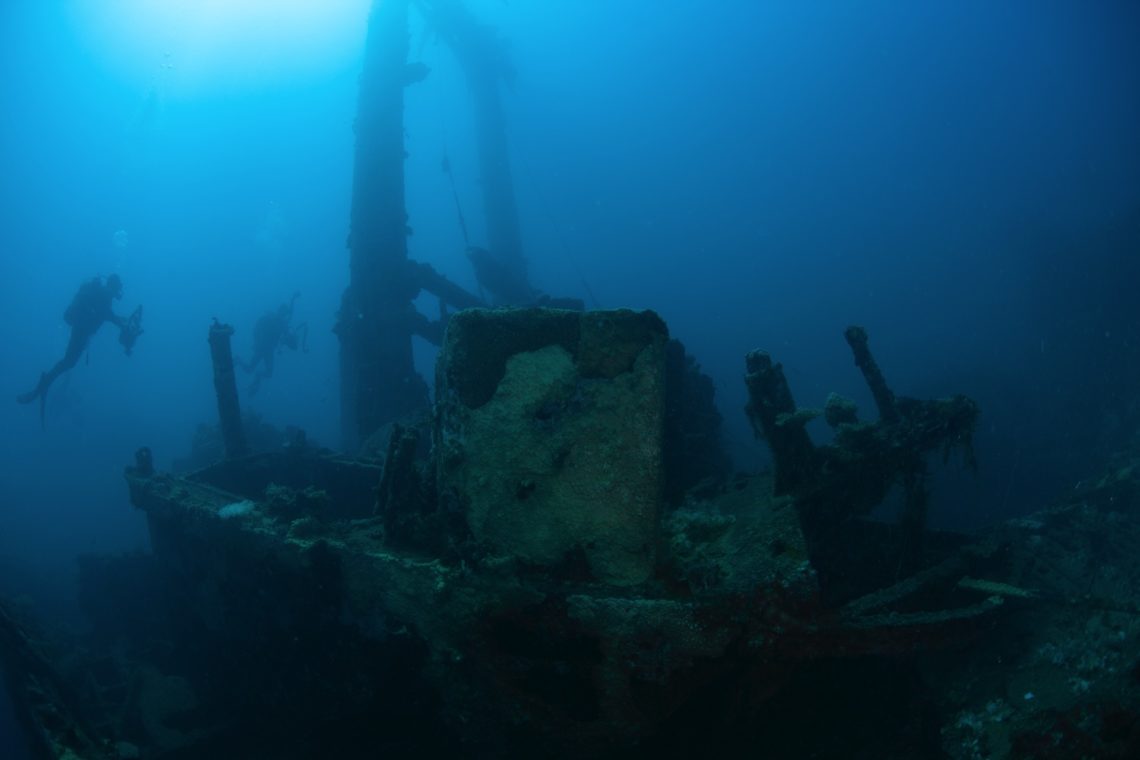
History
Operation Crossroads
During 1946, following the end of World War II, the US Navy gathered together a “mock” naval fleet for Operation Crossroads, to test the effects of atomic bomb blasts on naval fleets. The Pacific Proving Grounds site chosen for the explosive tests was Bikini Lagoon at Bikini Atoll and it was designated as a ship graveyard. Around the same time French fashion designer Louis Reard was looking for a name for his new, controversial, tiny swimsuit design and the “Bikini” was launched.
Operation Crossroads consisted of two detonations, each with a yield of 23 kilotons of TNT (96 TJ), the first nuclear testing done after the atomic bombing of Hiroshima and Nagasaki.
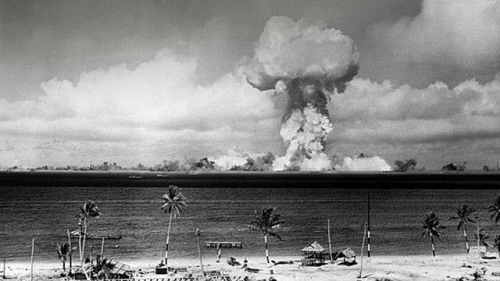
Crossroads – Able – 1 July 1946
Test Able
Test Able was the first attempt and an airborne detonation. Detonated at an altitude of 158 metres (520 feet) on 1 July 1946. The ships sunk by this blast included: USS Gilliam attack transport, IJN Sakawa light cruiser, USS Carlisle attack transport, USS Anderson destroyer and the USS Lamson destroyer. A further 14 ships sustained serious damage.
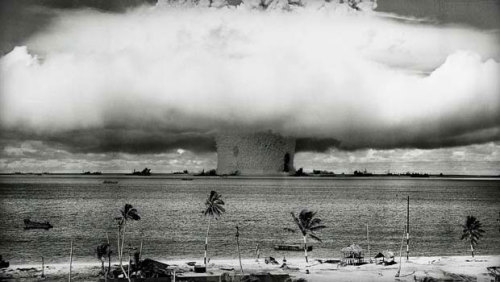
Crossroads – Baker – 25 July 1946
Test Baker
Test Baker was detonated 27 metres (90 feet) underwater beneath the landing craft LSM-60 on 25 July 1946. The ships sunk by this blast included: LSM-60 amphibious (no identifiable part of LSM-60 was ever found and it was presumed vaporised by the nuclear fireball), USS Arkansas battleship, USS Pilotfish submarine, USS Saratoga aircraft carrier, YO-160 yard oiler, HIJMS Nagato battleship, USS Skipjack submarine, USS Apogon submarine, and ARDC-13 drydock. The German heavy cruiser Prinz Eugen, sank in December 1946, five months after the test at Kwajalein Atoll, because radioactivity prevented repairs to a leak in the hull. Only nine surviving Test Baker target ships were eventually decontaminated and sold for scrap. The rest were sunk at sea after decontamination efforts failed.
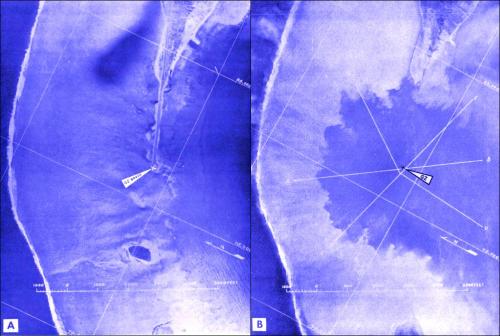
Operation Castle Bravo Crater
Following Tests – 1950’s
During 1954, 1956, and 1958, twenty-one more nuclear bombs were detonated at Bikini Atoll, yielding a total of 75 megatons, equivalent to more than three thousand Test Baker bombs. The first after Operation Crossroads was the dirtiest: the 15 megaton Bravo shot of Operation Castle on 1 March 1954, the largest-ever U.S. test. Fallout from Castle Bravo test caused radiation injury to Bikini islanders who were living on Rongelap Atoll at the time.
Bikini Lagoon became the final resting place for some of the most significant warships in naval history. The dangers of the radioactivity and limited services in the area led to divers staying away from this most remarkable scuba diving site for many years. However, from the dust and detritus of the nuclear weapon tests, the lagoon at Bikini Atoll has emerged as the world’s greatest wreck diving site. Bikini Atoll was first opened for limited diving in 1996, allowing divers to experience some of the most historic and amazing wreck diving in the world.

Sonar of USS Saratoga, in Bikini Atoll
1990’s – Present
Once diving at Bikini Atoll commenced in 1996, the dive spot quickly become popular among divers with around 200 visiting each year. However, oil prices and airline reliability then severely curtailed diving operations to the point of being suspended from August 2008 and through 2010, restricted to fully self-contained vessels by prior arrangement.
Indies Trader, aboard the MV Windward, was a key member of a successful trial live aboard expedition to Bikini Atoll in October 2010. The newest member of the Indies Trader fleet, the Indies Surveyor is now our boat of choice for dive charters in Bikini, with full decompression chamber, gas mixing and a technical diving background under Captain Martin Daly that is unparalleled.
Gallery
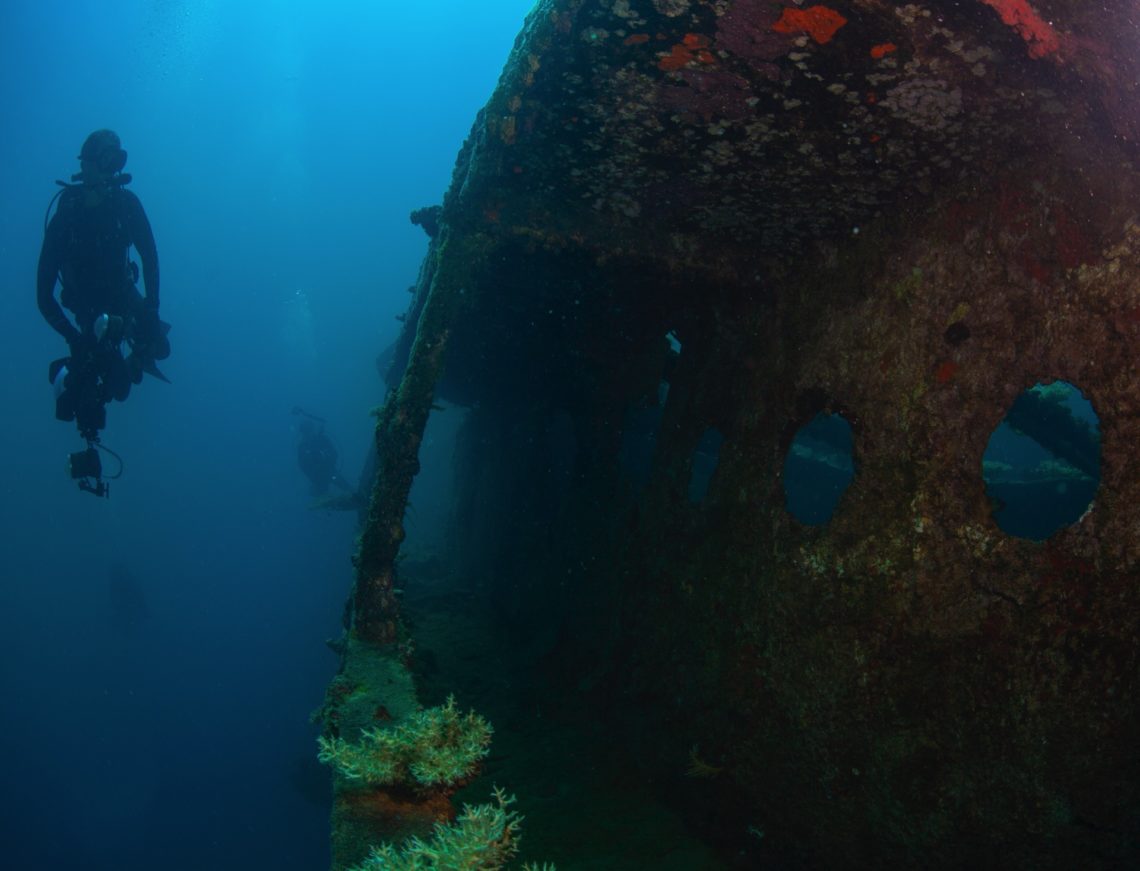
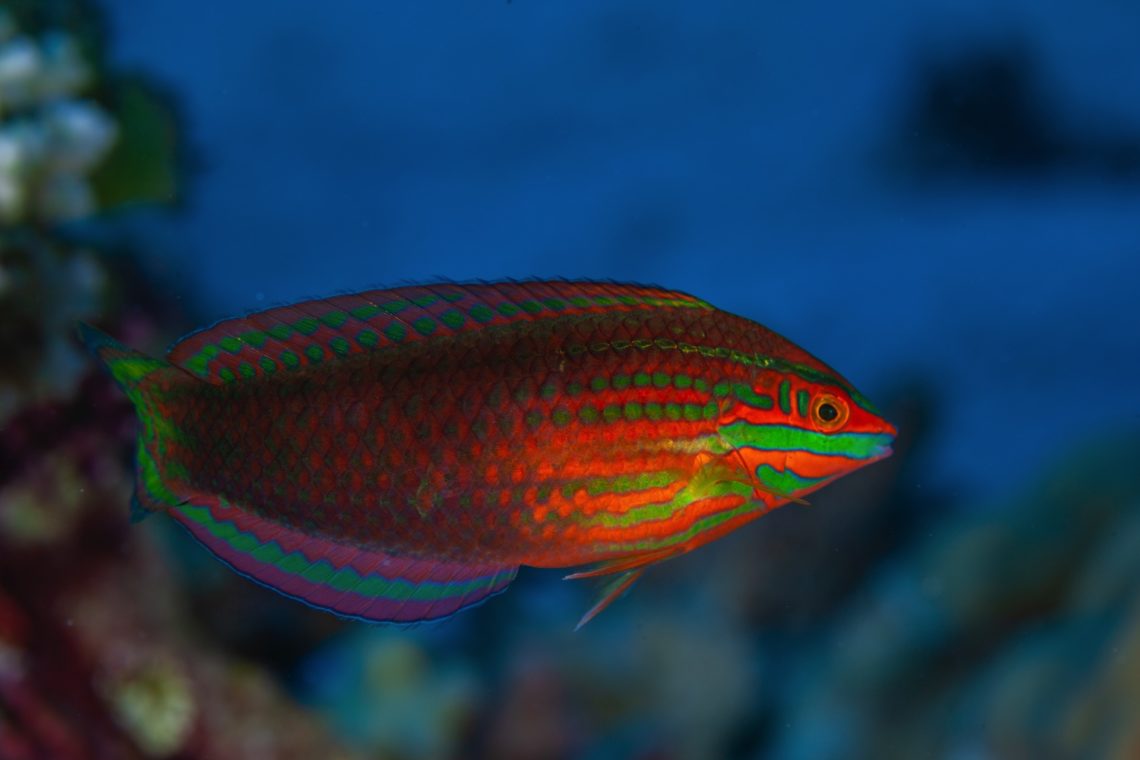
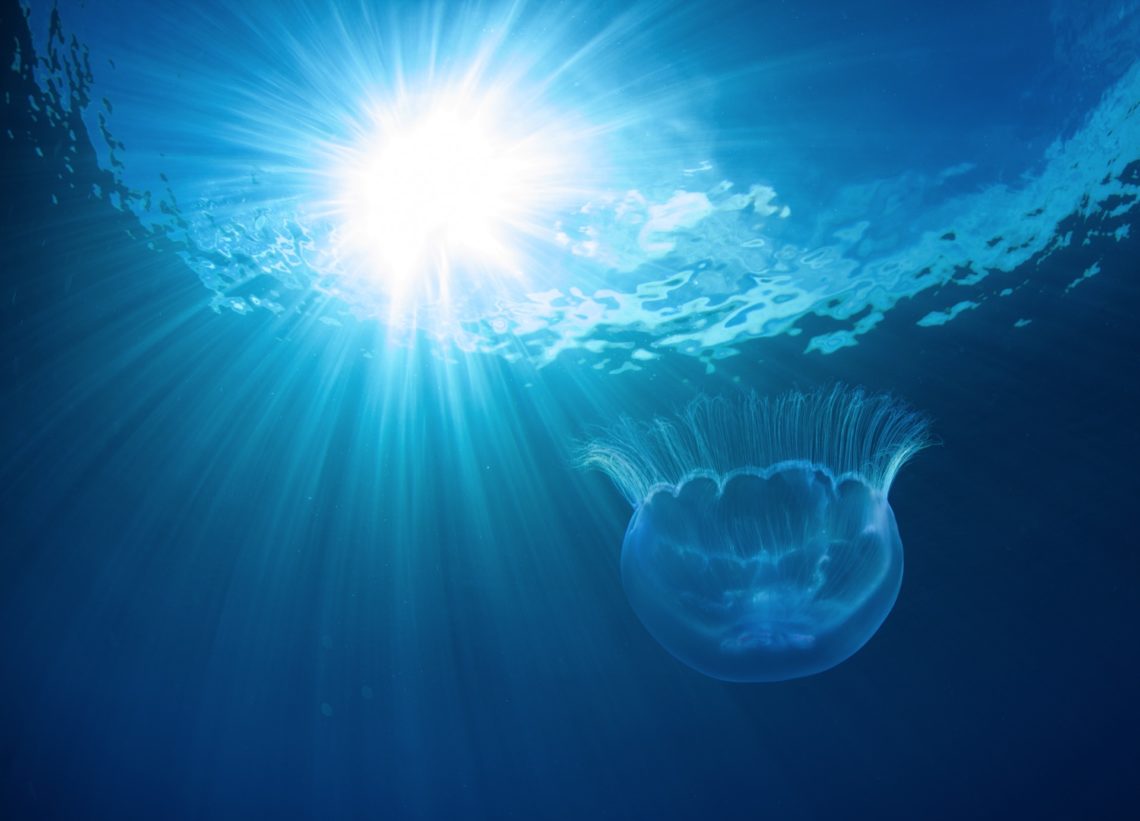
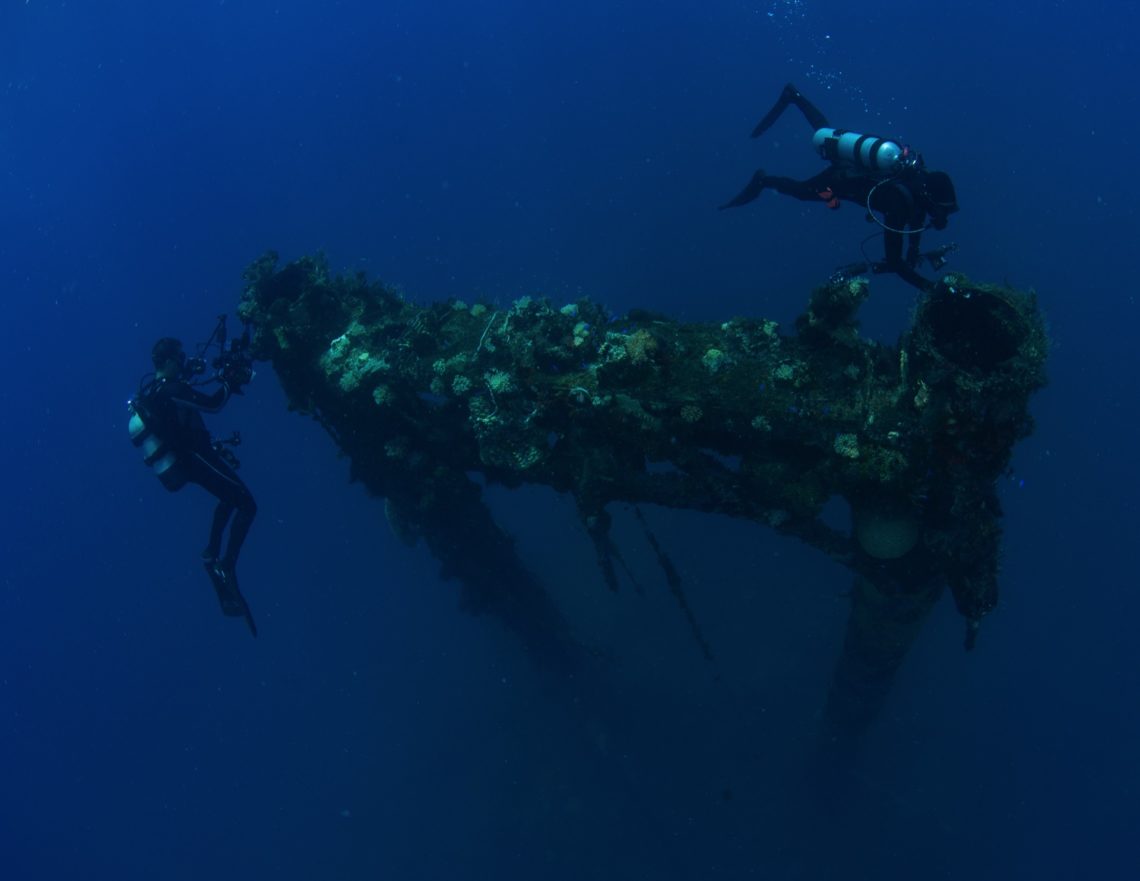
Underwater photos provided by Chris Dascher as well as photos by Damea Dorsey (Indies Surveyor)
Video by Kurt Cotoaga aboard the MV Windward
Wrecks
Click on each photo below to read more (wikipedia entry) of each ship
